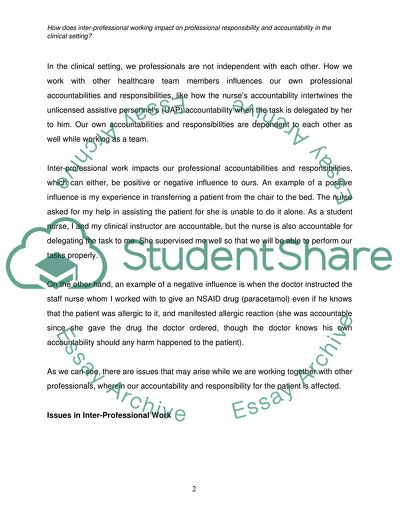Cite this document
(The Impact of Inter-Professional Working on Professional Responsibilit Assignment, n.d.)
The Impact of Inter-Professional Working on Professional Responsibilit Assignment. Retrieved from https://studentshare.org/nursing/1573340-how-does-interprofessional-working-impact-on-professional-responsibility-and-accountability-in-the-clinical-setting
The Impact of Inter-Professional Working on Professional Responsibilit Assignment. Retrieved from https://studentshare.org/nursing/1573340-how-does-interprofessional-working-impact-on-professional-responsibility-and-accountability-in-the-clinical-setting
(The Impact of Inter-Professional Working on Professional Responsibilit Assignment)
The Impact of Inter-Professional Working on Professional Responsibilit Assignment. https://studentshare.org/nursing/1573340-how-does-interprofessional-working-impact-on-professional-responsibility-and-accountability-in-the-clinical-setting.
The Impact of Inter-Professional Working on Professional Responsibilit Assignment. https://studentshare.org/nursing/1573340-how-does-interprofessional-working-impact-on-professional-responsibility-and-accountability-in-the-clinical-setting.
“The Impact of Inter-Professional Working on Professional Responsibilit Assignment”. https://studentshare.org/nursing/1573340-how-does-interprofessional-working-impact-on-professional-responsibility-and-accountability-in-the-clinical-setting.


